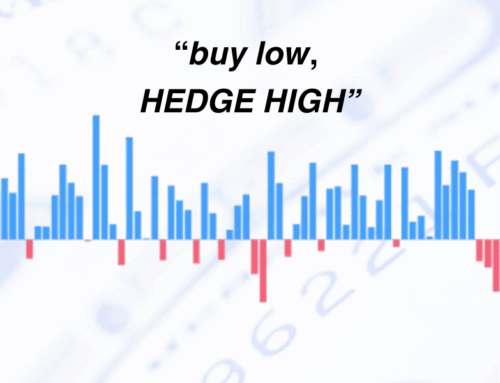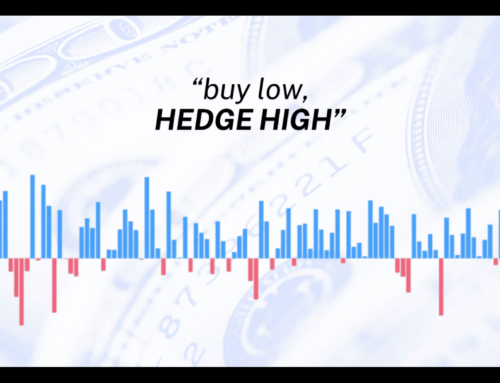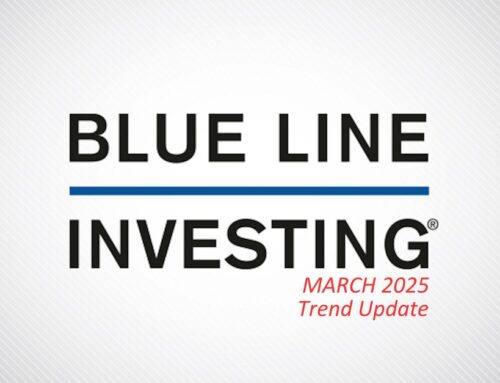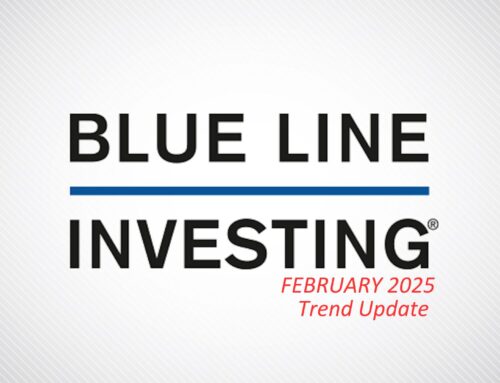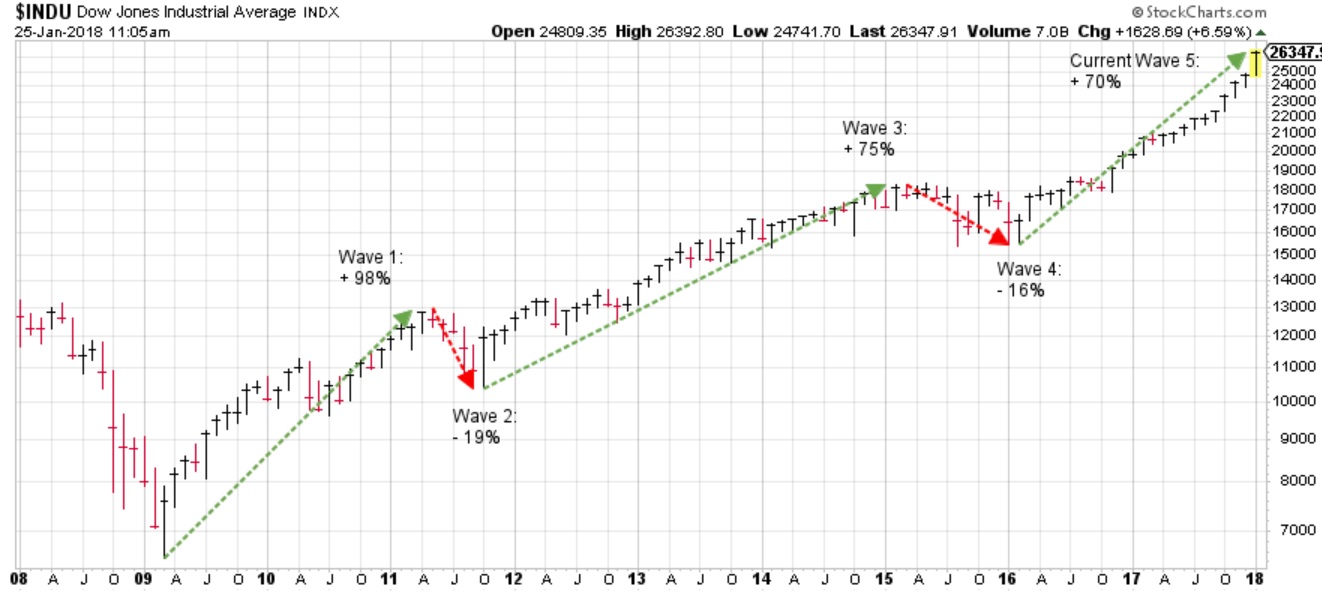
With all the emotional euphoria surrounding the continued rise in the US stock market, we thought it beneficial to share one theory, that if correct, could warn the market may be within 3% of a temporary top. To be clear – we are not calling a top, nor do we make investment decisions for clients based on what is being provided within this article. We simply want to provide information for investors to consider before throwing caution to the wind and chasing into a rising stock market.
We will do our best to keep this simple. According to Elliott Wave theory, collective psychology, or crowd psychology, moves between optimism and pessimism in natural sequences. These mood swings create patterns and a typical optimistic pattern follows a 5 wave advancing sequence. Upon completion of the 5 wave advance, a 3 wave corrective pattern typically follows.
Take a look at the image above of the rally in #theDow going back to the bottom in 2009. What do you notice about the potential wave structure since that time?
Advancing Wave 1: + 98%
Corrective Wave 2: – 19%
Advancing Wave 3: + 75%
Corrective Wave 4: – 16%
Advancing Wave 5 (so far): + 70%
Corrective waves 2 and 4 were almost the same in percentage terms which lends evidence this may very well be a 5 wave pattern. If this theory proves true, the current Wave 5 rally could equal the same percentage advance as wave 3 or wave 1. In other words, according to the Elliott Wave theory the “targets” for the completion of wave 5 could be approximately 27,037 (or 3% higher if equal to wave 3) or 30,900 (or 18% higher if equal to wave 1). The question we believe all investors should consider is “are new purchases worth the risk?”
With this information in mind should you sell out of your existing investments? We believe the answer is “absolutely not.” What if the market rallies another 18% and you sold out of your investments? Rather, we believe investors should be thinking about how to add protective hedges to their existing investments when appropriate. Since stock markets rise and fall, there very well may be a better buying opportunity for new purchases in the months to come.
We hope you found this information beneficial and we will provide more commentary on protective hedges in a future article.
Jeff Link
Disclaimers:
Chart courtesy of StockCharts.com
¹ Blue Line Investing (BLI) is an alternative to traditional wealth management. BLI uses a disciplined, rules-based investment process to seek investment opportunities, regardless of whether financial markets are rising or falling. Based on technical analysis research, the process applies trend-following using specific Exponential Moving Averages (EMAs) of the market along with other technical indicators. A moving average is a widely used indicator in technical analysis that helps smooth out past price action by filtering out the “noise” from random price fluctuations. EMA’s can be calculated for any time period. Some examples include the 5 day EMA; 50 day EMA; and 150 day EMA. We have attempted to simplify this by calling the various EMAs we use in our process the “Blue”, “Purple” and “Green” lines.
² The Dow Jones Industrial Average (DJIA) is a price-weighted average of 30 significant stocks traded on the New York Stock Exchange (NYSE) and the NASDAQ. It is not possible to invest directly in an index.
Technical analysis is a method of evaluating securities by analyzing statistics generated by market activity, such as past prices and volumes. Technical analysis attempts to predict a future stock price or direction based on market trends. The assumption is that the market follows discernible patterns and if these patterns can be identified then a prediction can be made. The risk is that markets may not always follow patterns. There are certain limitations to technical analysis research, such as the calculation results being impacted by changes in security price during periods of market volatility. Technical analysis is one of many indicators that may be used to analyze market data for investing purposes and should not be considered a guaranteed prediction of market activity. The opinions expressed are those of Blue Line Investing. The opinions referenced are as of the date of publication and are subject to change without notice. Blue Line Investing reserves the right to modify its current investment strategies based on changing market dynamics or client needs. Forward looking statements cannot be guaranteed. Material presented has been derived from sources considered reliable, but Blue Line Investing cannot guarantee its completeness or accuracy.
Past performance is not indicative of future results. This material is not financial advice or an offer to sell any product. The information contained herein should not be considered a recommendation to purchase or sell any particular security. This information is intended for educational purposes only and should not be considered financial advice. It should not be assumed that the investment recommendations or decisions we make in the future will be profitable or will equal the investment performance of the securities discussed herein.
Advisory services offered through Gordon Asset Management, LLC (GAM). GAM is an SEC-registered investment adviser. Registration does not imply a certain level or skill or training. More information about the advisor, its investment strategies and objectives, is included in the firm’s Form ADV Part 2, which can be obtained, at no charge, by calling (866) 216-1920. The principle office of Gordon Asset Management, LLC is located at 1007 Slater Road, Suite 200, Durham, North Carolina, 27703.

